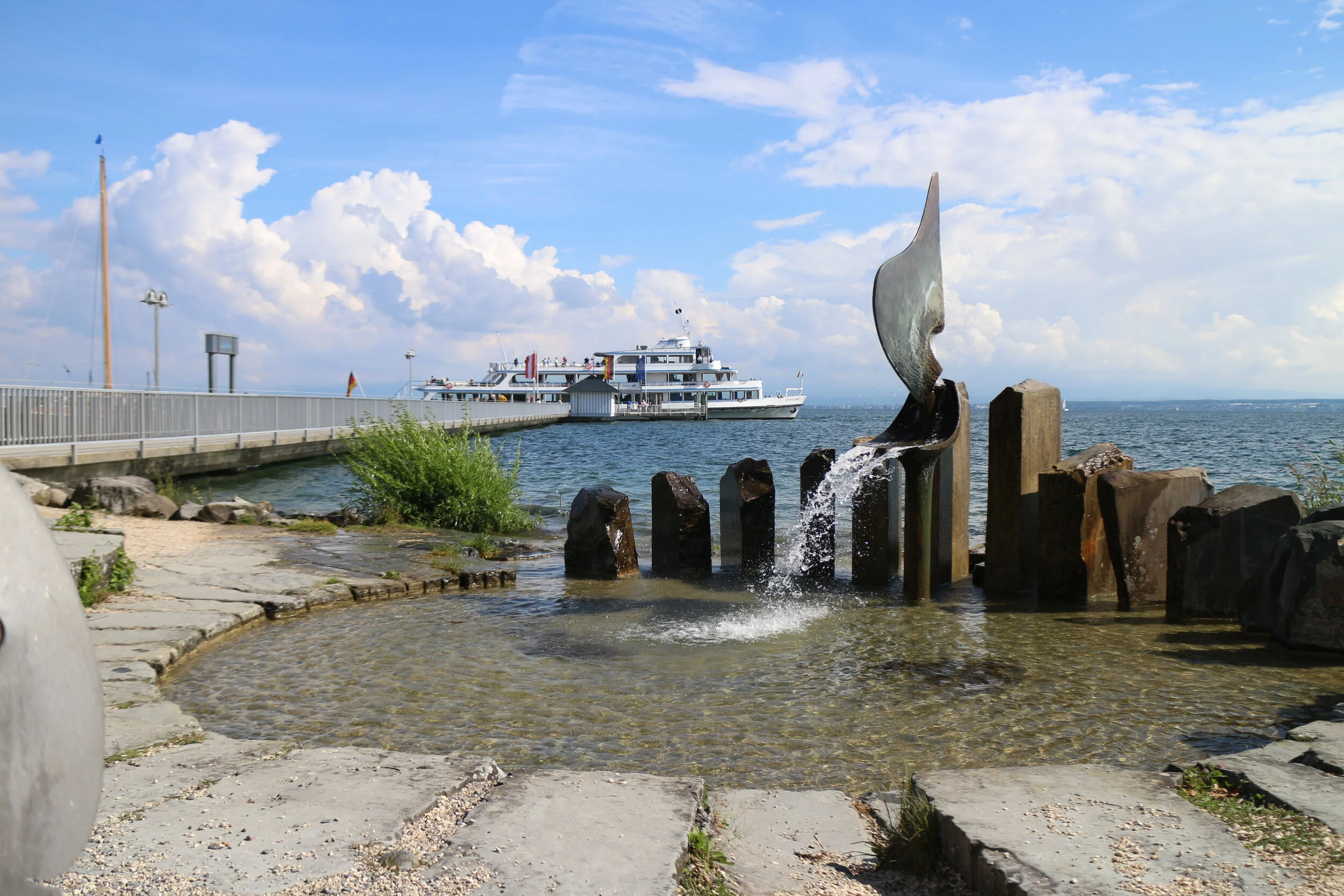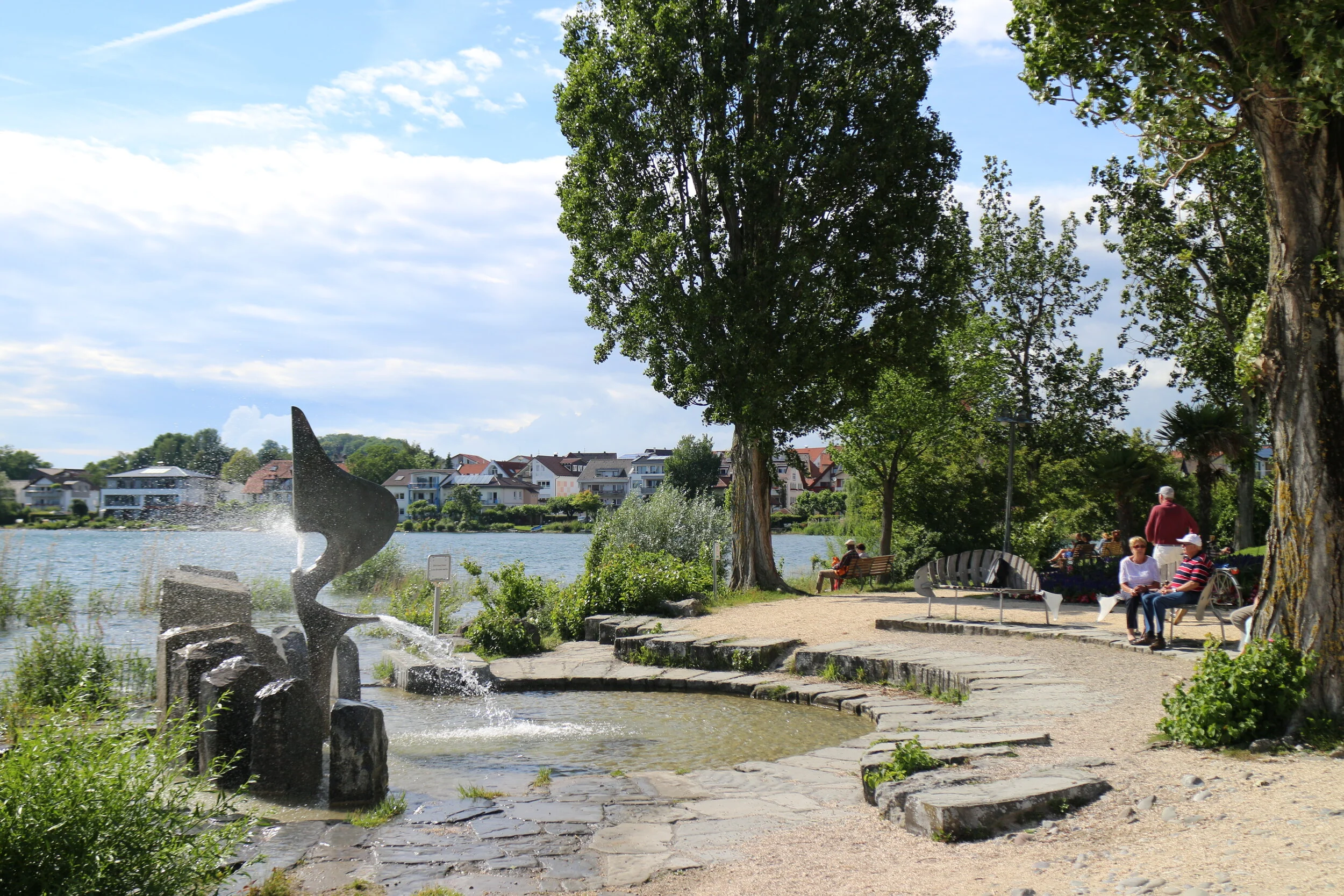
Arrival and Departure – Moving Moments in Man’s Path Through Life.
They are particularly striking when there is clearly a long distance ahead of or behind the traveler. Here a town on the sea or a large lake makes coming home or going away most emotional, as one arrives or leaves by ship with deliberation, in the true sense of the word. There is always a long distance before or behind somebody, in which only water can wash away the last traces.
In the 1980s, a promontory in Immenstaad, a quaint town nestled along the shores of Lake Constance, underwent a transformative redesign to become a verdant and inviting green space. At the end of the jetty, a striking landmark adorns the landing pier, constructed from a harmonious blend of stone, bronze, and water elements. This iconic structure serves as the focal point of the space, its vertical silhouette creating a captivating juxtaposition against the expansive backdrop of the horizon.
Atelier Dreiseitl
Water Design, Art, and Fountains
This project was originally produced by Atelier Dreiseitl under the leadership of Herbert Dreiseitl. Since its merger in the year 2013 with the Ramboll Group A/S this project and the copyright is owned by Ramboll.
Location
Bachstraße 23, 88090 Immenstaad am Bodensee, Germany
Client
Gemeinde Immenstaad
Timeline
Design: 1990 - 1991
Construction: 1991
Site Area
160 m2
Status
Completed
In Germany, Lake Constance in particular, the country’s largest expanse of fresh water, can give the experience of a reasonably long trip by boat. Immenstaad on the north shore used to be one of these. Here the lake widens out to the south-east to the part of it known as the Sea of Baden, and Immenstaad, on a small northern bay, looks south to the majestic chain of the Alps. Over 2 million people a year embark and disembark here.

The bronze figure standing at 4.5 metres high grows up out of 12 upright stones, local Dornbirn glauconite and Rohrschach sandstone. The stones origin from -the Alps- visible across the lake. The structure faces south, and forms a sensitive point at which the forces of sun, water and wind seem to be concentrated.
Its gesture is open to interpretation: water, falling and atomizing according to the strength of the wind gives it a sense of lightness, and can transform rigid metal into a waving flag. It points to the sky, stands in the water, and mediates between the two.
‘Freeman in the Elemental Universe’
Herbert Dreiseitl’s name for his bronze sculpture
The lake undergoes dynamic changes in its water level,
and so parts of the sculpture disappear with the seasons and then reappear.

Its radial basic shape is continued in individual stone blocks on the shore of Lake Constance. The water collects in a large stepped roundel and then flows, regulated by weirs if necessary, through channels and back into Lake Constance.
Children like to climb around the steles, and play in the water among the drainage channels with their little weirs, and to use the gravel bed as an area for their own creative explorations.
On the land side the fountain runs radially in the form of natural stone steles placed on a bed of river pebbles. The location needs a scale of about 300 square metres to develop its full symbolic power and range of uses.
The distinctiveness of this sculpture and space is molded by the opportunities it provides for both play and contemplative interaction. The ensemble as a whole is not meant to be just a landmark but it has certainly become a popular meeting point and a place for all to spend time on the Lake of Constance.
















